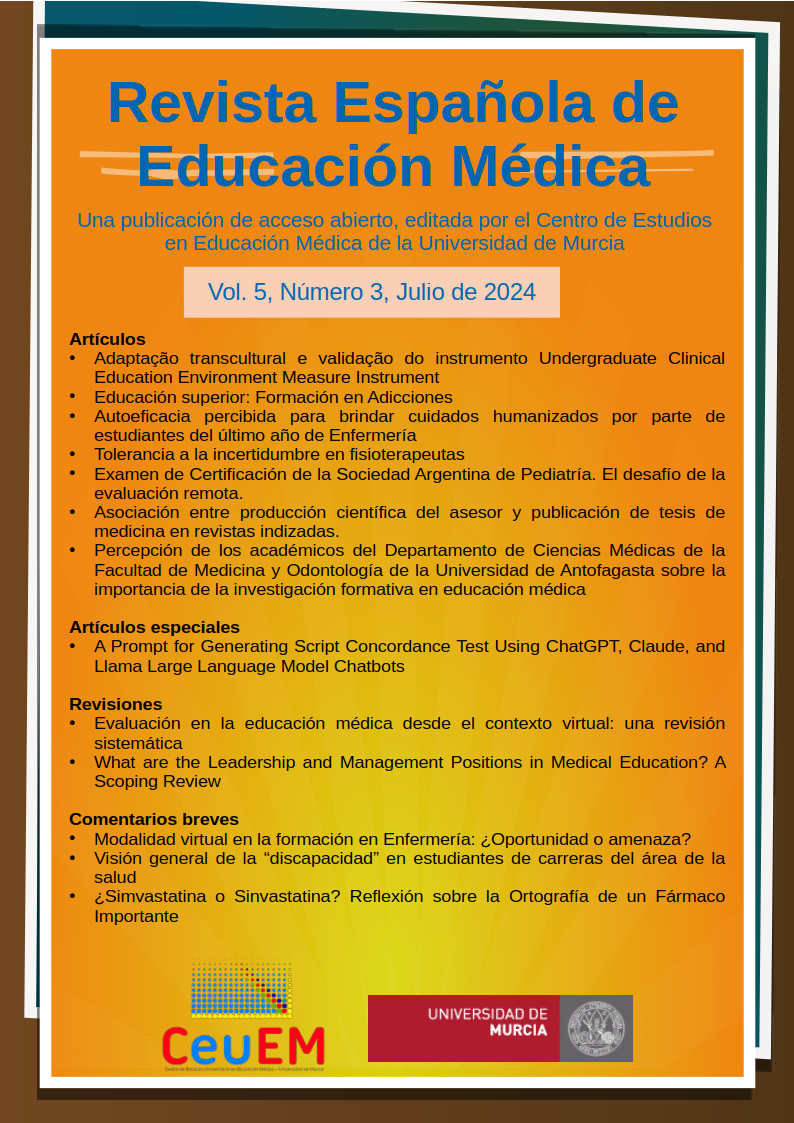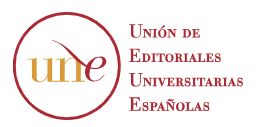¿Cuáles son los puestos de liderazgo y gestión en la educación médica? Una revisión de alcance
Resumen
El liderazgo puede definirse como una combinación de posición, responsabilidades, actitud, habilidades y comportamientos que contribuyen al éxito sostenible. A pesar de la amplia investigación sobre la representación de varios grupos, incluidos los géneros y las cualidades personales, en puestos de liderazgo y gestión en la educación médica, sigue habiendo una falta de claridad con respecto a qué son exactamente estos puestos. En esta revisión de alcance, buscamos determinar estos puestos siguiendo el marco de Levac et al. Buscamos cuatro bases de datos; PubMed, ERIC, Scopus y Web of Science hasta el 23 de marzo de 2023, lo que resultó en 558 registros para la selección después de eliminar duplicados y aplicar algunas exclusiones. La revisión incluyó 266 estudios para la extracción y síntesis de datos. Además de los puestos de liderazgo, revelamos los países de los estudios, el contexto principal, la disciplina y el año. Identificamos 396 puestos de liderazgo y gestión en la educación médica bajo cuatro categorías: puestos académicos, administrativos, relacionados con revistas y relacionados con la sociedad. Además, la mayoría de los estudios (59,77 %) abordaron temas relacionados con el género, seguidos de aquellos centrados en minorías subrepresentadas. Los artículos abarcaron 40 disciplinas diferentes, siendo los campos quirúrgicos los de mayor frecuencia, como la cirugía ortopédica, la neurocirugía y la cirugía plástica y reconstructiva. La lista sistemática de puestos de nuestro estudio puede considerarse un recurso valioso para futuras investigaciones, especialmente en estudios que buscan determinar la representación de mujeres y minorías subrepresentadas en puestos de liderazgo y gestión en la formación médica.
Descargas
Métricas
Citas
Vender, R. J. (2015). Leadership: An Overview. American Journal of Gastroenterology, 110(3), 362–367. https://doi.org/10.1038/ajg.2014.199
Swanwick, T., & McKimm, J. (2011). What is clinical leadership...and why is it important? The Clinical Teacher, 8(1), 22–26. https://doi.org/10.1111/j.1743-498X.2010.00423.x
Hartley, K. (2016). Untangling approaches to management and leadership across systems of medical education. BMC Health Services Research, 16(S2), 180. https://doi.org/10.1186/s12913-016-1391-9
Van Diggele, C., Burgess, A., Roberts, C., & Mellis, C. (2020). Leadership in healthcare education. BMC Medical Education, 20(S2), 456. https://doi.org/10.1186/s12909-020-02288-x
James, E., Evans, M., & Mi, M. (2021). Leadership Training and Undergraduate Medical Education: A Scoping Review. Medical Science Educator, 31(4), 1501–1509. https://doi.org/10.1007/s40670-021- 01308-9
Webb, A. M. B., Tsipis, N. E., McClellan, T. R., McNeil, M. J., Xu, M., Doty, J. P., & Taylor, D. C. (2014). A First Step Toward Understanding Best Practices in Leadership Training in Undergraduate Medical
Education: A Systematic Review. Academic Medicine, 89(11), 1563–1570. https://doi.org/10.1097/ACM.0000000000000502
Myers, C. G., & Pronovost, P. J. (2017). Making Management Skills a Core Component of Medical Education: Academic Medicine, 92(5), 582–584. https://doi.org/10.1097/ACM.0000000000001627
Alwazzan, L., & Al-Angari, S. S. (2020). Women’s leadership in academic medicine: A systematic review of extent, condition and interventions. BMJ Open, 10(1). https://doi.org/10.1136/bmjopen-2019- 032232
RevEspEduMed 2021 , 1 , x for review 15of 18
Nivet, M. A. (2010). Minorities in academic medicine: Review of the literature. Journal of Vascular
Surgery, 51(4), S53–S58. https://doi.org/10.1016/j.jvs.2009.09.064
Pololi, L. H., Evans, A. T., Gibbs, B. K., Krupat, E., Brennan, R. T., & Civian, J. T. (2013). The Experience of Minority Faculty Who Are Underrepresented in Medicine, at 26 Representative U.S. Medical Schools: Academic Medicine, 88(9), 1308–1314. https://doi.org/10.1097/ACM.0b013e31829eefff
Coe, C., Piggott, C., Davis, A., Hall, M. N., Goodell, K., Joo, P., & South-Paul, J. E. (2020). Leadership Pathways in Academic Family Medicine: Focus on Underrepresented Minorities and Women. Family Medicine, 52(2), 104–111. https://doi.org/10.22454/FamMed.2020.545847
Gabel, S. (2014). Expanding the Scope of Leadership Training in Medicine: Academic Medicine, 89(6), 848–852. https://doi.org/10.1097/ACM.0000000000000236
Levac, D., Colquhoun, H., & O’Brien, K. K. (2010). Scoping studies: Advancing the methodology. Implementation Science, 5(1), 69. https://doi.org/10.1186/1748-5908-5-69
Arksey, H., & O’Malley, L. (2005). Scoping studies: Towards a methodological framework. International Journal of Social Research Methodology, 8(1), 19–32. https://doi.org/10.1080/1364557032000119616
Maggio Maggio, L. A., Samuel, A., & Stellrecht, E. (2022). Systematic Reviews in Medical Education. Journal of Graduate Medical Education, 14(2), 171–175. https://doi.org/10.4300/JGME-D-22-00113.1
Thomas, A., Lubarsky, S., Varpio, L., Durning, S. J., & Young, M. E. (2020). Scoping reviews in health professions education: Challenges, considerations and lessons learned about epistemology and methodology. Advances in Health Sciences Education, 25(4), 989–1002. https://doi.org/10.1007/s10459- 019-09932-2
Young, M. E., Thomas, A., Lubarsky, S., Gordon, D., Gruppen, L. D., Rencic, J., Ballard, T., Holmboe, E., Da Silva, A., Ratcliffe, T., Schuwirth, L., Dory, V., & Durning, S. J. (2020). Mapping clinical reasoning literature across the health professions: A scoping review. BMC Medical Education, 20(1), 107. https://doi.org/10.1186/s12909-020-02012-9
Michael Ian Shamos. (2002). Handbook of Academic Titles. http://euro.ecom.cmu.edu/titles/titlebook.htm#Academic%20Professor
Hege, I., Schüttpelz-Brauns, K., & Kiessling, C. (2022). How is the situation of women in leadership positions in medical education in Germany? [Text/html]. https://doi.org/10.3205/ZMA001557
Kusurkar, R. A. (2022). The leaky pipeline of publications and knowledge generation in medical education. Perspectives on Medical Education, 11(2), 70–72. https://doi.org/10.1007/S40037-022-00700- 4
Manan, M. R., Nawaz, I., Rahman, S., & Manan, H. (2023). Diversity, equity, and inclusion in medical education journals: An evaluation of editorial board composition. Medical Teacher, 1–9. https://doi.org/10.1080/0142159X.2023.2249212
Budakoğlu, I. İ., Sayılır, M. Ü., Kıyak, Y. S., Coşkun, Ö., & Kula, S. (2021). Telemedicine curriculum in undergraduate medical education: A systematic search and review. Health and Technology, 11(4), 773–781. https://doi.org/10.1007/s12553-021-00559-1
Kulo, V., & Cestone, C. (2023). A Bibliometric Analysis of the 100 Most Cited Articles on Problem- Based Learning in Medical Education. Medical Science Educator. https://doi.org/10.1007/s40670-023- 01893-x
Naidu, T. (2021). Southern exposure: Levelling the Northern tilt in global medical and medical humanities education. Advances in Health Sciences Education, 26(2), 739–752. https://doi.org/10.1007/s10459-020-09976-9
Young, M. E., Thomas, A., Lubarsky, S., Gordon, D., Gruppen, L. D., Rencic, J., Ballard, T., Holmboe, E., Da Silva, A., Ratcliffe, T., Schuwirth, L., Dory, V., & Durning, S. J. (2020). Mapping clinical reasoning literature across the health professions: A scoping review. BMC Medical Education, 20(1), 107. https://doi.org/10.1186/s12909-020-02012-9
Acuña, A. J., Sato, E. H., Jella, T. K., Samuel, L. T., Jeong, S. H., Chen, A. F., & Kamath, A. F. (2021). How Long Will It Take to Reach Gender Parity in Orthopaedic Surgery in the United States? An Analysis of the National Provider Identifier Registry. Clinical Orthopaedics and Related Research, 479(6), 1179–1189. https://doi.org/10.1097/CORR.0000000000001724
Bi, A. S., Fisher, N. D., Bletnitsky, N., Rao, N., Egol, K. A., & Karamitopoulos, M. (2022). Representation of Women in Academic Orthopedic Leadership: Where Are We Now? Clinical Orthopedics and Related Research, 480(1), 45–56. https://doi.org/10.1097/CORR.0000000000001897
Brisbin, A. K., Chen, W., Goldschmidt, E., Smith, B. T., & Bourne, D. A. (2022). Gender Diversity in
Hand Surgery Leadership. Hand (New York, N.Y.), 15589447211038679. https://doi.org/10.1177/15589447211038679
Day, C. S., Tabrizi, S., Kramer, J., Yule, A. C., & Ahn, B. S. (2010). Effectiveness of the AAOS Leadership Fellows Program for Orthopedic Surgeons. The Journal of Bone and Joint Surgery. American Volume, 92(16), 2700–2708. https://doi.org/10.2106/JBJS.J.00272
Hiemstra, L., Wittman, T., Mulpuri, K., Vezina, C., & Kerslake, S. (2019). Dissecting disparity: Improvements toward gender parity in leadership and on the podium within the Canadian Orthopedic Association. JOURNAL OF ISAKOS JOINT DISORDERS & ORTHOPAEDIC SPORTS MEDICINE, 4(5), 227–232. https://doi.org/10.1136/jisakos-2019-000290
Hoof, M. A., Sommi, C., Meyer, L. E., Bird, M. L., Brown, S. M., & Mulcahey, M. K. (2020). Gender- related Differences in Research Productivity, Position, and Advancement Among Academic Orthopedic Faculty Within the United States. The Journal of the American Academy of Orthopedic Surgeons, 28(21), 893–899. https://doi.org/10.5435/JAAOS-D-19-00408
Rynecki, N. D., Krell, E. S., Potter, J. S., Ranpura, A., & Beebe, K. S. (2020). How Well Represented Are Women Orthopedic Surgeons and Residents on Major Orthopedic Editorial Boards and Publications? Clinical Orthopedics and Related Research, 478(7), 1563–1568. https://doi.org/10.1097/CORR.0000000000000824
Sobel, A. D., Cox, R. M., Ashinsky, B., Eberson, C. P., & Mulcahey, M. K. (2018). Analysis of Factors Related to the Sex Diversity of Orthopedic Residency Programs in the United States. The Journal of Bone and Joint Surgery. American Volume, 100(11), e79. https://doi.org/10.2106/JBJS.17.01202
Yue, T., & Khosa, F. (2020). Academic Gender Disparity in Orthopedic Surgery in Canadian Universities. Cureus, 12(3), e7205. https://doi.org/10.7759/cureus.7205
Benzil, D. L., Abosch, A., Germano, I., Gilmer, H., Maraire, J. N., Muraszko, K., Pannullo, S., Rosseau, G., Schwartz, L., Todor, R., Ullman, J., & Zusman, E. (2008). The future of neurosurgery: A white paper on the recruitment and retention of women in neurosurgery. Journal of Neurosurgery, 109(3), 378–386. https://doi.org/10.3171/JNS/2008/109/9/0378
Donaldson, K., Callahan, K. E., Gelinne, A., Everett, W., Ames, S. E., Air, E. L., & Durham, S. R. (2021). Gender diversity in United States neurosurgery training programs. Journal of Neurosurgery, 1–6. https://doi.org/10.3171/2020.7.JNS192647
Feng, R., Hoffman, S. E., Wagner, K., Ullman, J. S., Stippler, M., & Germano, I. M. (2021). Women Neurosurgeons in Academic and Other Leadership Positions in the United States. World Neurosurgery, 147, 80–88. https://doi.org/10.1016/j.wneu.2020.12.069
Ganju, A., Mahajan, U. V., Kemeny, H., Gregory Frankel, H., & Benzil, D. L. (2021). Slow progress in the visibility of women in neurosurgery in the United States: Opportunity for improvement. Neurosurgical Focus, 50(3), 1–7. Scopus. https://doi.org/10.3171/2020.12.FOCUS20919
Melnick, K., Grady, C., Cuneo, M., Brennan, M., & Rahman, M. (2021). Academic Accomplishments of Female Neurosurgeons Currently in Practice in the United States. World Neurosurgery, 150, 20–25. https://doi.org/10.1016/j.wneu.2021.03.023
Odell, T., Toor, H., Takayanagi, A., Zampella, B., Siddiqi, J., Jalal, S., Golbaz, K., Qamar, S., & Khosa,
F. (2019). Gender Disparity in Academic Neurosurgery. Cureus, 11(5), e4628. https://doi.org/10.7759/cureus.4628
Renfrow, J. J., Rodriguez, A., Wilson, T. A., Germano, I. M., Abosch, A., & Wolfe, S. Q. (2018). Tracking Career Paths of Women in Neurosurgery. Neurosurgery, 82(4), 576–582. https://doi.org/10.1093/neuros/nyx251
Rodriguez, A. (2015). Women in surgical leadership positions: Further assessment and future planning needed. American Journal of Surgery, 209(6), 1112. https://doi.org/10.1016/j.amjsurg.2014.12.030
Ryan, C. A., Sciscent, B. Y., Bhanja, D., Tucker, J., & Daggubati, L. C. (2023). Female Neurosurgery Residency Program Directors in the United States: A Cross-sectional Descriptive Analysis. World Neurosurgery, 169, 52–56. https://doi.org/10.1016/j.wneu.2022.10.091
Silva, N., Cerasiello, S., Semonche, A., Sotayo, A., Luis, J., Shao, B., Richardson, A., & Eloy, J. A. (2019). Gender Representation at Neurological Surgery Conferences. World Neurosurgery, 129, 453–459. https://doi.org/10.1016/j.wneu.2019.06.062
Chen, K., Ha, G., Schultz, B. D., Zhang, B., Smith, M. L., Bradley, J. P., Thorne, C. H., Kasabian, A. K., Pusic, A. L., & Tanna, N. (2020). Is There Gender Inequality in Plastic Surgery? Evaluation of Society Leadership and Composition of Editorial Boards. Plastic and Reconstructive Surgery, 145(2), 433e– 437e. https://doi.org/10.1097/PRS.0000000000006503
Chen, W., Baron, M., Bourne, D. A., Kim, J. S., Washington, K. M., & De La Cruz, C. (2020). A report on the representation of women in academic plastic surgery leadership. Plastic and Reconstructive Surgery, 844–852. Scopus. https://doi.org/10.1097/PRS.0000000000006562
Hughes, A. J., Samson, T. D., Henry, C. R., & Johnson, T. S. (2022). A Descriptive Analysis of Integrated Plastic Surgery Residency Program Directors in the United States. Annals of Plastic Surgery, 89(4), 344–349. Scopus. https://doi.org/10.1097/SAP.0000000000003239
Landeen, K. C., Xie, Y., Moran, M. L., & Yang, S. F. (2022). Female Representation and Academic Leadership in Facial Plastic and Reconstructive Surgery. Laryngoscope, 132(4), 781–785. Scopus. https://doi.org/10.1002/lary.29839
Ngaage, L. M., Harris, C., Rosen, C., Ge, S., Kim, C., Rada, E. M., Manahan, M., Silverman, R. P., Slezak, S., & Rasko, Y. M. (2020). Sex Disparity in Academic Rank and Industry Payments to Plastic Surgeons. Annals of Plastic Surgery, 84(2), 201–207. https://doi.org/10.1097/SAP.0000000000001989
Ngaage, L. M., Ngadimin, C., Harris, C., Rawes, C., Wu, Y., Landford, W., Slezak, S., & Rasko, Y. M. (2020). The Glass Ceiling in Plastic Surgery: A Propensity-Matched Analysis of the Gender Gap in Career Advancement. Plastic and Reconstructive Surgery, 146(3), 690–697. https://doi.org/10.1097/PRS.0000000000007089
Robinson, I. S., Silva, A. K., Abdou, S. A., Daar, D. A., Hazen, A., & Thanik, V. (2020). Melting the Plastic Ceiling: Where We Currently Stand on Measures to Support Women in Academic Plastic Surgery. Plastic and Reconstructive Surgery, 698–707. Scopus. https://doi.org/10.1097/PRS.0000000000007090
Derechos de autor 2024 Servicio de Publicaciones de la Universidad de Murcia

Esta obra está bajo una licencia internacional Creative Commons Atribución-NoComercial-SinDerivadas 4.0.
Las obras que se publican en esta revista están sujetas a los siguientes términos:
1. El Servicio de Publicaciones de la Universidad de Murcia (la editorial) conserva los derechos patrimoniales (copyright) de las obras publicadas y favorece y permite la reutilización de las mismas bajo la licencia de uso indicada en el punto 2.
© Servicio de Publicaciones, Universidad de Murcia
2. Las obras se publican bajo una licencia Creative Commons Reconocimiento-NoComercial-SinObraDerivada 4.0.
![]()
3. Condiciones de auto-archivo. Se permite y se anima a los autores a difundir electrónicamente las versiones preprint (versión antes de ser evaluada y enviada a la revista) y/o post-print (versión evaluada y aceptada para su publicación) de sus obras antes de su publicación, ya que favorece su circulación y difusión más temprana y con ello un posible aumento en su citación y alcance entre la comunidad académica.



















